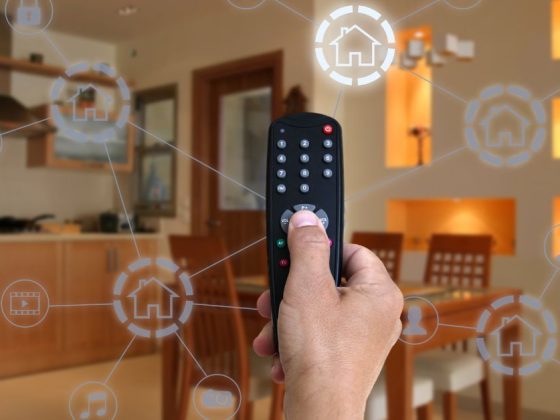Ready to upgrade your living room centerpiece? Buying a new TV can be exciting — but also a bit overwhelming. With so many screen sizes, resolutions, and tech acronyms floating around, it’s easy to jump in and pick the first shiny model you spot. That’s why knowing what to check before you buy a new TV is essential. By doing a little homework up front, you’ll end up with a screen that looks great, fits your space and usage, and gives you many years of enjoyment.
In this guide, we’ll walk you through everything you should consider before you buy a new TV. We’ll cover key features, room-set-up tips, technology choices, common mistakes, and even seasonal or lifestyle considerations. Whether you’re in the US or UK, streaming movies or gaming, this guide gives you practical, actionable steps to make a confident decision.
1. Define Your Usage and Budget
What will you use it for?
Before you buy a new TV, step back and ask: How will I actually use it? Here are some common usage scenarios:
-
Movie nights with family or friends
-
Streaming shows (Netflix, Prime, etc)
-
Gaming (console or PC)
-
Watching sports or fast-action content
-
General TV and news background viewing
Each of these may emphasize different features. For example, a gamer might care more about refresh rate, input lag, and HDMI 2.1 ports; a movie viewer might prioritize deep contrast and accurate color.

Set your budget and stick to it
Prices vary widely. For example, one guide indicates that at the ~$500 mark you can get a decent 55–65″ 4K LED model, at ~$1,000 you can get more premium features (higher refresh rates, better HDR), and beyond tha,t you’re into flagship territory.
Setting a clear budget helps you avoid overspending on specs you won’t use — so before you buy a new TV, decide your maximum spend and factor in extras (soundbar, mounting, cables).
Usage × Room = Size & Placement
-
Think about how far you sit from the TV and where it will go (wall-mounted or on a stand).
-
For a 65″ screen, the viewing distance might be around 7-9 feet (≈2.1-2.7 m) in typical rooms; one guide gives approximate distances for sizes.
-
Measure the space: width, height, depth, and ensure your furniture/stand supports the screen and weight.
Setting the usage, budget, and placement clearly ensures you pick a TV that suits you rather than chasing specs.
2. Screen Size & Viewing Distance
Why size matters
If you go too small, you won’t get immersive viewing; too large, and it’s overwhelming, or you’ll have to sit far back. When you think about what to check before you buy a new TV, size is one of the most fundamental factors.
Viewing distance guide
Here’s a rough table for common screen sizes and recommended viewing distances:
| Screen Size | Approximate Viewing Distance* |
|---|---|
| 55″ | ~6-8 ft (1.8-2.4 m) |
| 65″ | ~7.5-9.5 ft (2.3-2.9 m) |
| 75″ | ~9-11 ft (2.7-3.4 m) |
| 85″ | ~10-13 ft (3.0-4.0 m) |
* Based on recent manufacturer guidance.
Pro tips
-
If your room is small, several manufacturers suggest that a 55″ or 65″ often hits the sweet spot.
-
Make sure the TV width fits your stand or wall space (e.g., feet width, stand depth).
-
Consider future-proofing: maybe you’ll move or rearrange the room.
-
Think about lighting and space: a very large TV in a bright room may look washed out unless you pick the right panel (more on this later).
In short: size matters — but context (room size, viewing distance, lighting) matters even more when you check what to look at before you buy a new TV.
3. Display Technology & Picture Quality
One of the most technical but vital parts of your decision is display technology. Before you buy a new TV, understand the key options and what they mean for your viewing experience.

Resolution: 1080p vs 4K vs 8K
-
Today, almost all new TVs in the mainstream market are 4K (3840×2160 pixels).
-
8K TVs exist — but there is very little native 8K content today, so you’re mostly paying for future-proofing.
-
For most buyers, 4K is the practical sweet spot.
-
If you only watch from far away or on a very small screen, you might get away with 1080p — but new models are largely 4K now.
Panel types: LED/LCD vs OLED vs QLED vs Mini-LED
Here are the major types and what to think about:
-
LED/LCD: Standard back-lit LCD panel with LED lighting. Less expensive, wide range of options.
-
QLED: With quantum dots added, offering better brightness and color than basic LED. (Used by brands like Samsung)
-
Mini-LED: A newer LED approach – smaller back-lighting units mean better contrast and brightness control.
-
OLED: Each pixel emits its own light, which means perfect blacks, wide viewing angles, excellent picture-quality — but often at a premium price.
HDR, Contrast, Brightness & Color
-
HDR (High Dynamic Range) lets you see more detail in very bright or very dark scenes.
-
Contrast ratio matters — especially if your room has dark viewing conditions (for example, movie nights).
-
Brightness is more critical in bright rooms (lots of windows or daylight). OLEDs typically shine in dark rooms; high-end LED/QLED/Mini-LED may be better in bright rooms.
-
Wide color gamut ensures more vivid, accurate colors — look for terms like “Wide Color Volume”.
Gaming & Motion Considerations
If you plan to game (on console or PC), check for:
-
HDMI 2.1 ports (for 4K120Hz or higher).
-
Native refresh rate of 120 Hz or higher (or at least good motion processing).
-
Low input lag (delayed response can impact gameplay).
-
Variable Refresh Rate (VRR) support.
What to ask yourself before you buy a new TV:
-
Will I watch mostly in a bright or dark room?
-
Do I need the highest contrast, or can I compromise?
-
Will I use it for gaming (and thus need low lag/high refresh)?
-
How important is future-proofing (8K, etc)?
Understanding these technology trade-offs means you won’t get sold fancy names that don’t match your needs.
4. Smart Features, Ports & Connectivity
After size and display technology, the features and connectivity matter. Here’s what to check before you buy a new TV so it works well now — and years from now.
Smart TV platform & apps
-
Most TVs today are “smart” — they have built-in streaming apps (Netflix, Amazon, Disney+, etc).
-
Check which operating system (e.g., Google TV, Roku TV, proprietary systems).
-
Consider how often the manufacturer updates the software (important for security, new apps, longevity).
-
If you use voice assistants (Alexa, Google Assistant, Siri), check compatibility.
Ports & connections
Here’s a quick checklist of essential connectivity:
-
Number and type of HDMI ports (HDMI 2.1 preferred if gaming or streaming high frame rate).
-
USB ports (for media playback).
-
Ethernet port (for stable streaming, if WiFi is weak).
-
WiFi version and Bluetooth support.
-
Audio out (for connecting to a soundbar or external speaker system).
-
ARC/eARC support (for audio return channel).
-
Consider future-proofing: will you connect multiple devices (console, streaming box, Blu-ray, PC)?
Cable management, power & swaps
-
Will the TV’s placement hide or expose cables? Planning makes installation cleaner.
-
Consider power consumption — large TVs and bright panels use more power.
-
When comparing models, check if upgrades cost significantly more or if older, cheaper models meet your needs.
Including connectivity and smart features in your checklist before you buy a new TV helps avoid frustration later when you find the TV lacks one of your needed ports or features.
5. Room Lighting, Viewing Angle & Acoustic Environment
Choosing a TV isn’t just about the screen—it’s also about where you put it and how you’ll use it. These contextual elements are often overlooked, yet they can make or break your viewing experience.
Room lighting & reflection
-
Bright rooms (lots of daylight, windows) often require a TV with higher brightness and anti-glare capabilities.
-
Dark rooms (movie nights) benefit more from high contrast and deep blacks (e.g., OLEDs).
-
Avoid placing the TV directly opposite large windows or bright light sources unless the panel handles it.
-
Consider curtains/blinds / ambient lighting to tune the room.
Viewing angle & seating arrangement
-
If you have wide seating (e.g., a large family room or open plan), ensure the TV has good viewing-angle performance (OLED typically better than basic LED).
-
Wall-mount vs stand: wall mounting often gives better height and viewing angle but requires planning (cables, studs, depth).
Sound & acoustics
-
Many built-in TV speakers are mediocre — if sound quality matters (movies, sports, games), consider adding a soundbar or surround system.
-
Room acoustics matter: large bare walls may cause echo; consider rugs/cushions/soft furnishings.
-
Placement of the TV also affects sound (if it is in a recessed wall, behind furniture, etc).
Lifestyle / seasonal considerations
-
If you entertain outdoors or during sunny daylight, you might need a brighter panel (so consider before you buy a new TV, seasonal light changes).
-
If your room doubles as a workspace (for example, remote working), then positioning and glare may matter more.
-
If you move between US/UK homes (as you mentioned you might), consider compatibility (e.g., voltage, plug type, warranty coverage, broadcast standards).
By considering the entire viewing environment, you’ll get a far better experience.
6. Pricing, Timing & Warranty Considerations
Buying a TV at the right time and ensuring you have proper warranty and support is critical. Before you buy a new TV, it’s wise to pay attention to price trends and warranty details.
Pricing & when to buy
-
Prices drop regularly — models from previous years often get large discounts when new models arrive.
-
Major sales (Black Friday, Cyber Monday, Boxing Day in the UK) often include TV deals.
-
One guide notes that a 65″ is the current sweet-spot, and 77″ sets are rising in popularity — so if you buy slightly earlier, you may pay more than if you wait.
-
Set alerts or monitor price history if you’re not in urgent hurry.
Warranty, returns & support
-
Check the manufacturer’s warranty and what it covers (panel, back-lighting, full set).
-
For UK buyers, check consumer rights (14-day returns, etc). For US buyers, check retailer and brand policies.
-
Consider extended warranties if you are investing a lot and want extra peace of mind (but evaluate cost vs benefit).
-
Ensure the TV model has good firmware support (updates) and that the brand offers reliable customer service.
Hidden costs
-
Wall mounting hardware, cables, surge protectors, and cleaning accessories — these add cost.
-
If you opt for a large size, you may need to upgrade your furniture or stand.
-
Consider disposal/recycling of the replaced TV if replacing an old one (cost or effort).
-
Shipping and delivery charges (especially with large sizes) may apply.
Decision checklist
-
Set budget and usage needs.
-
Decide on the maximum size that fits your room.
-
Compare last year’s model vs the new model — savings may be significant.
-
Check retailer return policy, warranty, and brand support.
-
Calculate total cost: TV + mounting + cables + possible sound upgrade.
Approaching your purchase with a pricing/warranty mindset ensures you’re not just buying a screen, but buying peace of mind.
7. Common Mistakes & Pitfalls to Avoid
Even experienced buyers can make mistakes when they don’t pay attention. Here are common pitfalls you should avoid before you buy a new TV — and how to steer around them.
Mistake #1: Buying the biggest size regardless of room fit
Many buyers think “bigger is better” and go for the largest screen possible. But if you sit too close or in a narrow room, you may see pixels, get neck strain, or overwhelm the space. Use the viewing-distance guide above.
Mistake #2: Ignoring ambient light and contrast
Choosing a TV based only on specs and ignoring room lighting can lead to disappointment (washed-out picture in bright rooms, or too much reflection). Always view the TV (or read reviews about brightness/reflection) with your room in mind.
Mistake #3: Falling for marketing jargon
Terms like “Ultra HD Premium”, “Quantum HDR”, “X-Motion Clarity”, etc, sound good — but may not translate to real-world performance. Before you buy a new TV, look beyond the buzzwords and check review results or trusted lab tests. For example, experts mention you should ask “how bright? how good is the contrast? how many HDMI ports?” rather than just fancy names.
Mistake #4: Buying a TV without planning for connectivity
Imagine buying a TV, only to realize you don’t have enough HDMI ports, or your console requires HDMI 2.1 and the TV doesn’t support it. Or maybe you intend to wall-mount, but the mount doesn’t fit. Avoid these by planning.
Mistake #5: Neglecting sound
A great picture paired with poor sound can feel cheap. If you watch movies or play games, the audio matters. Don’t assume built-in speakers are enough — plan for a soundbar or better.
Mistake #6: Overpaying for future-proofing you’ll never use
Buying an 8K TV when you don’t have 8K content (and won’t for years) may be overkill, especially if the budget could be better spent on screen size or sound quality. Before you buy a new TV, match features to your real needs now and in the near future.
By keeping these pitfalls in mind, you’ll avoid buyer’s regret and get a smarter purchase.
8. Step-by-Step: How to Shop Smart
Here’s a checklist you can follow before you buy a new TV—to ensure your decision is well-informed and tailored to you.
-
Measure your space: width, height, stand depth, and view distance from seating.
-
Define your usage: streaming, gaming, sports, movies, mixed.
-
Set a realistic budget: include extras like mounting, cables, and sound.
-
Research display tech & size: pick the best size that fits your room, decide on LED vs OLED vs QLED based on your lighting.
-
Read specifications: resolution (4K vs 8K), refresh rate (60 Hz vs 120 Hz), HDR support, HDMI ports, smart OS.
-
Check reviews: look for trusted sources (e.g., lab tests, real-world feedback) for brightness, contrast, and input lag. For example, one source says, “When shopping for a TV … ask yourself: What size TV am I shopping for? How much light does the place where I’m putting the TV get?”
-
Visit a store (if possible): See models in person to judge how they look in real lighting, compare side-by-side sizes.
-
Compare last year’s model vs the new model: Often, the previous generation offers great value with almost identical performance.
-
Check connectivity & future devices: Number of HDMI ports, eARC/ARC, support for game consoles, streaming devices, speakers.
-
Plan installation: Will you wall-mount? Do you have the right stand? Are cables hidden or managed?
-
Purchase & test immediately: Once you receive it, test all features, watch for dead pixels or issues, and keep the packaging until you’re sure it’s fine.
-
Keep documentation & register the TV: Register for warranty, keep receipt, note model number.
Following these steps will ensure you’re not just buying a TV — you’re buying the right TV.
9. Seasonal, Lifestyle & Contextual Considerations
Because you mentioned you move between the US and the UK and you’re interested in tech and lifestyle, here are some extra considerations to keep in mind before you buy a new TV.
Multiple homes & region compatibility
-
Ensure the TV supports broadcast standards in your region (US vs UK may differ).
-
Warranty: Check if the brand provides international warranty coverage or service network in both countries.
-
Plug/voltage: The US uses 110-120 V, while the UK uses 220-240 V; ensure compatibility or that the TV supports universal voltage.
-
Streaming services: Some apps may differ by region (UK vs US); check smart platform flexibility.
Lifestyle: Gaming vs casual watching vs streaming
-
If you’re a content writer and may use the TV for remote working or screen sharing, consider features like HDMI input from a laptop, PC mode.
-
If you frequently host social gatherings or movie nights, a bigger size and better sound may matter more.
-
For day-to-day background TV vs dedicated theatre mode, you may compromise on premium features.
Seasonal changes & lighting
-
In summer months, rooms may be brighter (more daylight), meaning you need higher brightness and anti-glare features.
-
In winter, you may watch in darker conditions; a high-contrast panel (OLED) may shine better.
-
If you move homes, lighting conditions may change (UK homes often have softer daylight; US homes may have bigger windows or stronger sunlight), so flexibility helps.
Future-proofing vs immediate value
-
If you plan to upgrade frequently, maybe aim for a solid mid-tier model now rather than top of the line.
-
If you plan to keep the TV for many years and move between homes, investing in good picture quality may pay off.
10. FAQ: Things People Ask When Buying a TV
Here are some frequently asked questions and answers to clear up common doubts before you buy a new TV.
Q: Do I need an 8K TV now?
A: For most people, no. There is very limited native 8K content now, and 4K remains the standard. Buying 8K often means paying a premium for something you’ll rarely use. One guide supports this.
Q: Is OLED always better than LED?
A: Not necessarily. OLED offers superb contrast and picture quality, especially in dark rooms, but in very bright rooms, high-end LED/QLED/Mini-LED TVs with strong brightness can perform better. Also, the cost and burn-in risk (though reduced in modern models) may factor.
Q: What refresh rate do I need?
A: If you’re gaming or watching fast action (sports, racing) you may benefit from a 120 Hz or higher refresh rate and HDMI 2.1 support. For standard TV and streaming, 60 Hz can suffice.
Q: How important is sound quality?
A: Very important. Many TVs have thin speakers that don’t deliver immersive audio. If you care about movies/games, plan for a soundbar or external system.
Q: How long should a TV last?
A: The Typical lifespan is around 7-10 years for many households. That means you want features that still matter several years down the line.
Q: Should I wait for sales?
A: Yes — model refresh cycles and major sales (Black Friday, etc) often mean good deals. If your current TV works fine, waiting can help you get more value.
Conclusion
When you’re gearing up to buy a new TV, taking the time to think through your needs, space, budget, and usage will save you from regret and buyer’s remorse. From choosing the right size to understanding display technology (LED vs OLED vs QLED), from planning for connectivity to avoiding marketing pitfalls — knowing what to check before you buy a new TV makes all the difference.
Investing a little extra effort before you buy a new TV will help you get something that fits your lifestyle and delivers great viewing experiences year after year. Measure your space, check the specs, match the TV to your room’s lighting and use-case, and choose a model that aligns with how you’ll watch. Then sit back, relax, and enjoy the big screen.













